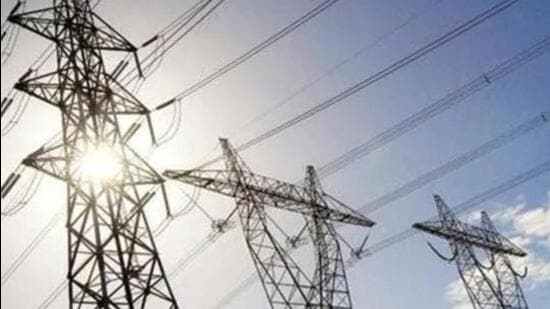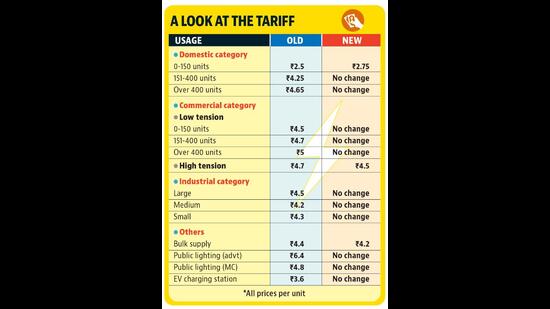Chandigarh: Mild power tariff hike for domestic users after 4 years
Power tariff for 0-150 units slab increased by ₹0.25; no change in other domestic consumption slabs; rates of one commercial category, along with bulk supply, decreased
City’s domestic power consumers will have to pay marginally higher than last year with the Joint Electricity Regulatory Commission (JERC) increasing the tariff for the 0-150 units slab by ₹0.25.

For other domestic slabs, and all other categories of consumers, including commercial and industrial, the rates have either not been changed or decreased.
In the commercial consumer category (high tension), the tariff has been decreased from existing ₹4.70 to ₹4.50. Similarly, for the bulk supply category, the tariff stands decreased from ₹4.40 to ₹4.20. The revised rates will be applicable retrospectively from April 1, 2022.
Notably, the UT administration had proposed no hike in power tariff for the 2022-2023 fiscal in its petition submitted with the JERC on April 19.
The last increase in the domestic and commercial electricity tariff in Chandigarh was in 2018-2019. In fact, in 2021-22, there was even a slight reduction, though the administration had requested to keep it unchanged.
Chandigarh overall has more than 2.4 lakh consumers, including 2 lakh domestic consumers, who receive power bills comprising the actual consumption and fixed charges.

Fixed charges increased
The fixed charges for domestic consumers, charged over and above the consumption rates, have been increased from ₹10 kW/month to ₹15 kW/month. For the commercial (low tension) connections, it has been increased from ₹20 to ₹25 for single-phase users.
For bulk supply, the fixed charges have been reduced from ₹200 to ₹150.
The commission observed that the UT had a standalone revenue surplus in each year from FY 2016-17 to FY 2019-20. Further, it observed that the projected standalone surplus for FY 2022-23 and cumulative revenue surplus till FY 2022-23 at existing tariff is expected to be ₹2.63 crore and ₹275.26 crore, respectively.
Even after the changes, the projected standalone revenue surplus at the end of FY 2022-23 is expected to be ₹1.53 core and net reduction of tariff is to the tune of around 1%.
The commission has approved the average billing rate of ₹5.18/kWh against the approved average cost of supply of ₹5.17/kWh.
A two-member body, JERC is an autonomous authority responsible for regulation of the power sector. Its objective is to consolidate the laws relating to generation, transmission, distribution, trading and use of electricity; take measures conducive to development of electricity industry; protect interests of consumers and rationalise electricity tariff.
Privatisation process on
The administration is in the advanced stages of the department’s privatisation.
It was on January 7 that the Centre had given its nod to the UT administration’s proposal, paving the way for the department’s transfer to private hands.
UT had selected Kolkata-based industrial and services conglomerate RP-Sanjiv Goenka (RPSG) Group after the firm quoted the highest bid – ₹871 crore against the reserve price of ₹175 crore – for takeover of the services.
The department will be bundled into a company and its shares transferred to the company.
The privatisation process has been entangled in legal battles since the UT Powermen Union approached the Punjab and Haryana high court against UT’s move, which also elicited criticism from Resident Welfare Associations and opposition parties amid fears of significant increase in tariff.





